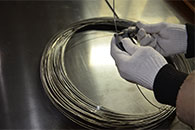Aug . 16, 2024 22:34 Back to list
Tailored Solutions for Your Business Needs with Custom OEM Options and Support
Understanding OEM Benefits and Challenges in Manufacturing
Original Equipment Manufacturer (OEM) refers to a company that produces goods that are marketed and sold by another company. This term is widely used in the manufacturing industry to describe relationships where one company’s products or components are integrated into another company’s end product. The OEM model has become increasingly prevalent in industries such as automotive, electronics, and consumer goods. Understanding the benefits and challenges associated with OEM can provide insights into its significance in modern manufacturing.
One of the primary benefits of working with OEMs is cost efficiency. By outsourcing manufacturing to specialized companies, businesses can significantly reduce production costs. OEMs often have established expertise, modern technology, and optimized processes, allowing them to produce components more efficiently than companies could in-house. This reduction in costs can be critical for businesses looking to maintain competitive pricing and increase profit margins.
.
Moreover, OEM relationships can enhance product quality. Established OEMs typically have rigorous quality control measures in place to ensure that the components they produce meet high standards. Companies can benefit from this expertise by sourcing high-quality components, which can lead to better end products and increased customer satisfaction. The assurance of quality can also help businesses build a strong brand identity, aligning their products with reliability and excellence.
oem

Despite the many advantages, there are also challenges associated with working with OEMs. One significant concern is the potential loss of control over the manufacturing process. When companies outsource production, they may become reliant on their OEM partners, making it difficult to monitor quality and adherence to specifications. If an OEM fails to deliver quality components on time, it can disrupt the supply chain and impact the overall production schedule.
Additionally, intellectual property (IP) risks can arise in OEM relationships. Sharing designs and specifications with an OEM can create opportunities for IP theft or misuse. Companies must take precautions to protect their proprietary information through well-defined contracts and agreements. Failing to safeguard intellectual property can have long-term repercussions, endangering a company’s competitive edge and market position.
Another challenge is managing communication and collaboration effectively. Clear communication is essential for successful OEM partnerships, as misunderstandings can lead to delays, errors, and unmet expectations. Companies must invest time and resources in building strong relationships with their OEM partners to ensure all parties are aligned on objectives, timelines, and quality standards.
In conclusion, the OEM model offers numerous benefits, including cost efficiency, access to advanced technology, and improved product quality. However, businesses must also be aware of the challenges such as loss of control, IP risks, and the need for effective communication. By navigating these complexities wisely, companies can successfully leverage OEM partnerships to enhance their product offerings while maintaining a competitive edge in the marketplace. As industries continue to evolve, embracing the OEM model may be essential for sustained success and innovation.
share
-
Safety Mesh for Windows – Durable Mosquito and Insect Protection Solutions
NewsJul.08,2025
-
12x24x1 Air Filter – High Efficiency Replacement for Improved Air Quality
NewsJul.08,2025
-
Premium Stainless Steel Mosquito Mesh - Durable, Rust-Resistant Protection for Windows & Doors
NewsJul.08,2025
-
Premium Stainless Steel Garden Mesh for Lasting Durability Best & High Quality Mesh Solutions
NewsJul.07,2025
-
Gold and White Blackout Curtains – Elegant Light Blocking & Insulation for Home
NewsJul.07,2025
-
Premium Spa Filter Cartridge for Clean Water Spa Pool Filters Cartridges for Jacuzzi Durable, high-efficiency spa filter cartridge for spas and jacuzzis. Improve water quality—order your pool filter cartridge now!
NewsJul.07,2025

